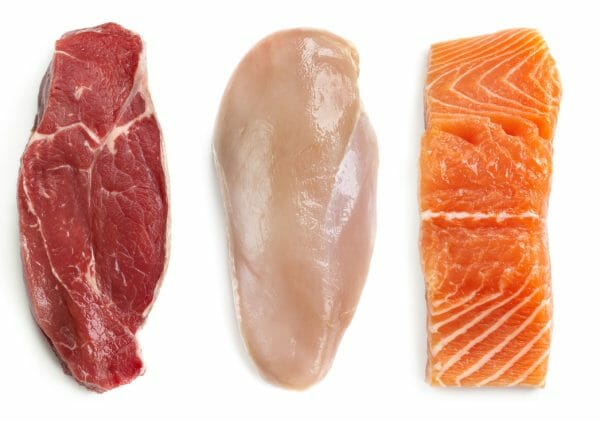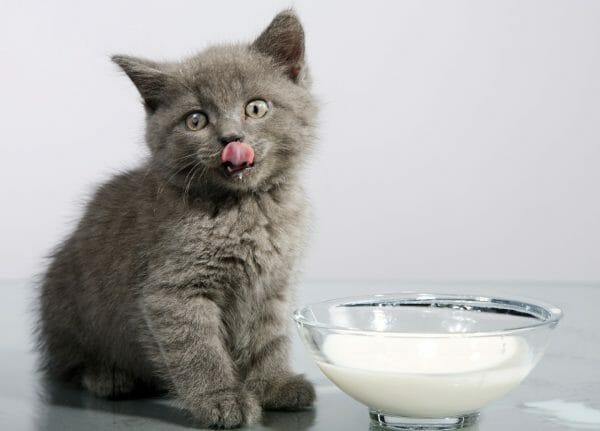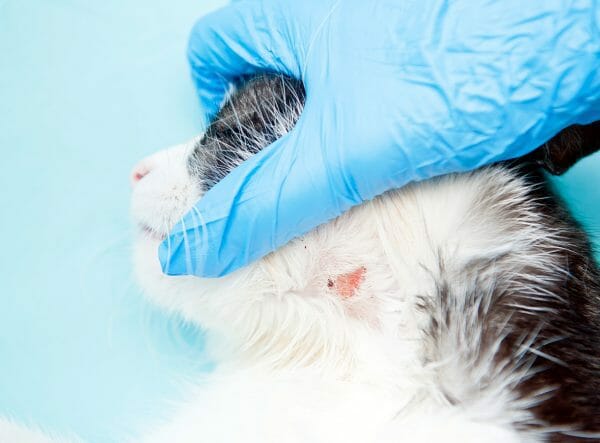What Are Cat Food Allergies?
Cat food allergies—also known as food intolerances—describe any abnormal reaction to an antigen found in food. These allergies are related to reactions brought on by the cat’s immune system to specific proteins present in its food. In these circumstances, the immune system mistakenly views the foodstuff as being dangerous and reacts according to the perceived danger.
Although it is quite easy to understand which foods cause an allergic reaction, it is not always known why the allergy happens. It is also often unclear why certain cats will develop an allergy to a specific type of food, while others may not.
Food allergies in felines typically develop after the age of four to five years. However, they can develop at any stage during a cat’s life. Both female and male cats are equally susceptible to developing food allergies.
An important aspect of any food allergy is the cat’s genetic disposition. Often, food allergies will relate to atopy (also called an inhalant allergy). In this type of allergy, a feline inhales a protein to which it is allergic, which leads to skin problems. Many cats are allergic to both the ingredients found in their food and to allergens within the environment (such as pollen, dust mites, and mold).

Common Cat Food Allergies
To become intolerant of a certain food, a cat must first be exposed to it. It is not possible for a cat to develop an allergy to types of food to which it has not yet been exposed. The most common foods that cause allergic reactions in cats include:
- Fish
- Beef
- Chicken
- Dairy products
Currently, research into cat food allergies is limited, and there may be additional allergies that have not yet been identified.

Cat Food Allergy Symptoms
Spotting the signs of food allergies in cats is not always easy as the symptoms are not often specific and triggers can be inconsistent. However, some common indicators to be aware of include:
- Vomiting
- Diarrhea
- Itchy skin—chronic itching can occur throughout the entire year and is often worst around the cat’s face, neck, ears, armpits, and groin
- Hair loss—particularly evident around the stomach and sides due to overgrooming
- Wounds or abrasions brought on by overgrooming
- Skin rashes—including eosinophilic dermatitis and miliary dermatitis
- Recurring skin and ear infections
Many cats with food allergies will also develop gastrointestinal symptoms and have an increased bowel movements, itching around the rectum that causes the cat to scoot, and difficulty passing stools, which causes the cat to strain when defecating. It is critical to have a vet diagnose a cat with these symptoms as they may also be indicators of other health issues, such as lymphomas, heartworm, or amyloidosis.

Diagnosing Cat Food Allergies
Owners that observe any of the clinical signs of cat food allergies should take the feline to a veterinarian for a full assessment. Before diagnosing a cat with food allergies, the veterinarian will want to rule out other possible causes, such as the presence of fleas, allergies to fleas, and atopy.
Once all other causes have been ruled out, the veterinarian will carry out a cat food allergy test. This test will involve discontinuing the cat’s current diet and feeding them a specially designed exclusion diet for at least 12 weeks.
There are three main directions that the veterinarian may take during the trial:
- Hydrolyzed protein diet. In this type of diet, the proteins will be broken down so much that the cat’s immune system cannot recognize them.
- Commercially available novel protein diet. In this diet, ingredients from the cat’s previous diet will not be present.
- Home cooked novel protein diet. This diet will be prepared at home and will not contain ingredients found in the cat’s previous diet.
If the cat’s symptoms subside during the trail, this will provide confirmation that the reaction was the result of something in its food.
During the food trail, the veterinarian will recommend gradually reintroducing certain food items back into the cat’s diet to pinpoint exactly which ingredient is causing the reaction. Allowing the cat to eat anything other than the suggested food during the trail may cause an allergic reaction, and it will be difficult to tell whether the trail has been successful. This can prove particularly difficult to manage in situations where a cat consumes food outside of the home environment.

Treatment for Cat Food Allergies
Unfortunately, food allergies cannot be cured. Therefore, treatment for a food allergy will involve minimizing exposure to the allergen using a specially controlled diet.
Once the triggers of a cat’s allergies have been identified, it will be important to feed the animal a special diet for the duration of its life. Any types of food that have been found to cause allergies should be completely removed from the cat’s diet. In addition, it will be important to avoid feeding the cat anything other than the specially controlled diet. This includes both cat treats and human food.
There is no official guidance to determine what a hypoallergenic pet food is. However, some products may be labeled as such. Because the term “hypoallergenic” is not legally defined, these products may not always be suitable for a cat that experiences intolerance to certain foods.
A veterinarian will be able to recommend the best cat food for allergies. The two main types of therapeutic food that a veterinarian may suggest are:
- Hydrolyzed proteins that are broken down into pieces that are so small that the immune system cannot identify the allergen
- Foods that contain a novel protein (such as venison or duck). Using a protein source that the cat has never eaten before means the immune system will not see them as a problem
Any specific diet instructions should be shared with anyone else that feeds the cat. If a feline visits neighbors for meals or treats, it is important to provide any specific food items to them as well. However, it is always best to keep the cat indoors to avoid so the diet can be strictly controlled.
Prognosis for Cat Food Allergies
Once the specific triggers of the allergy have been identified and the diet has been altered, there is no reason why the cat will not live a normal, healthy life, free from any of its previous symptoms.




